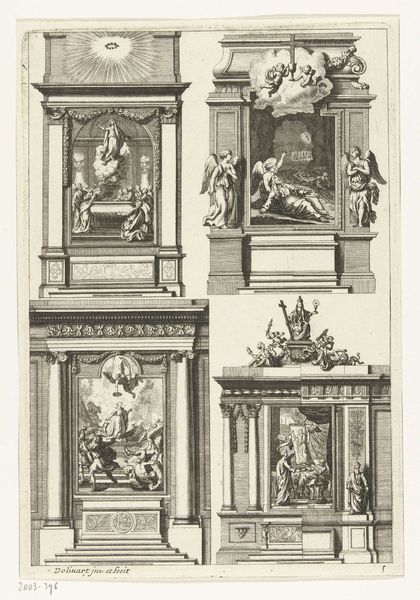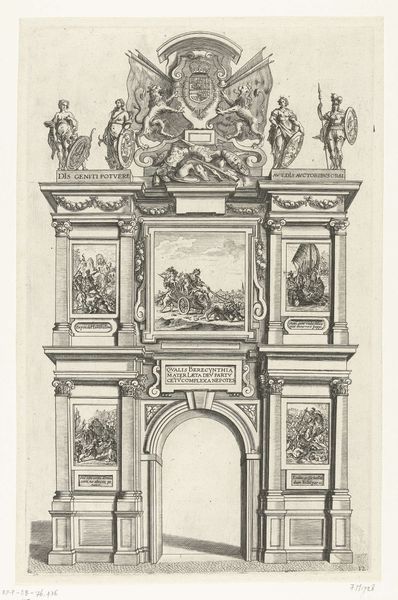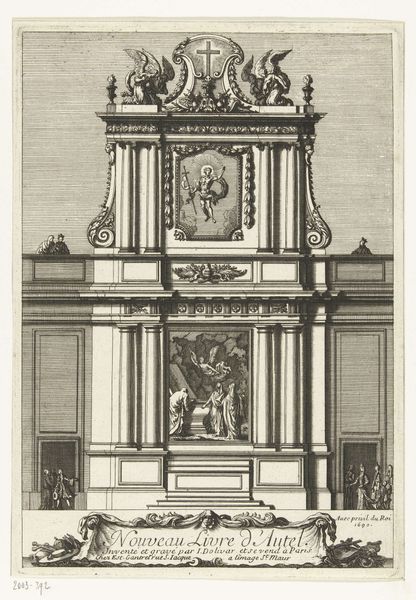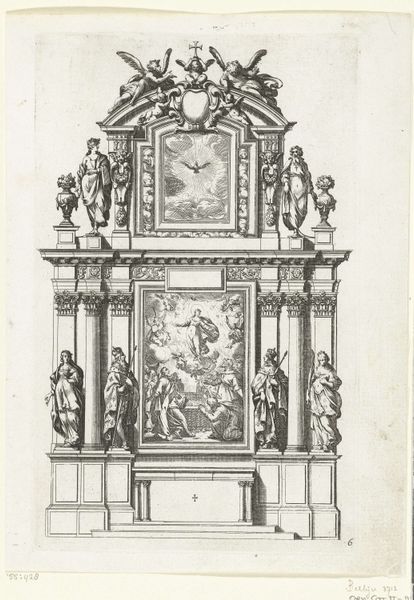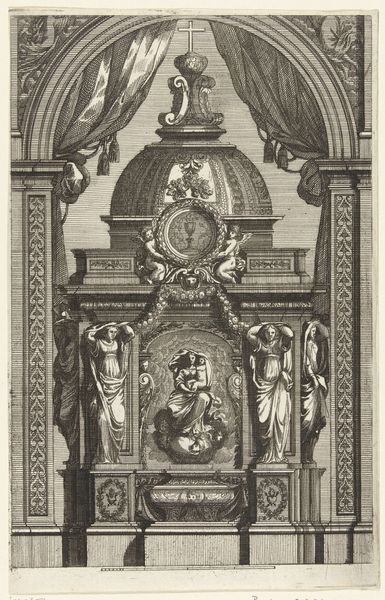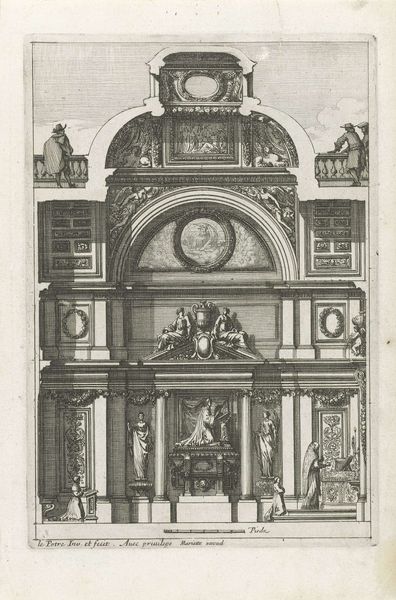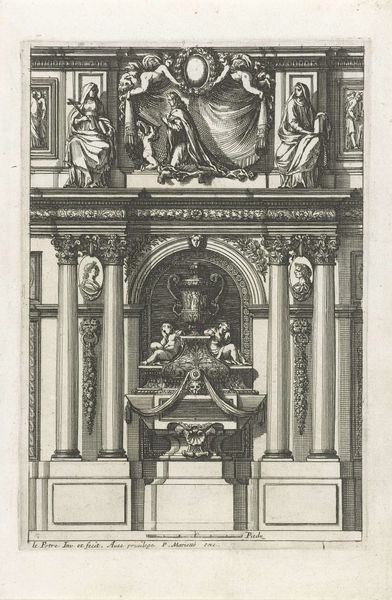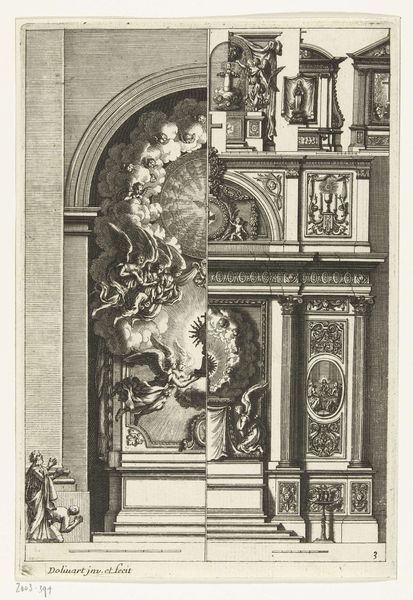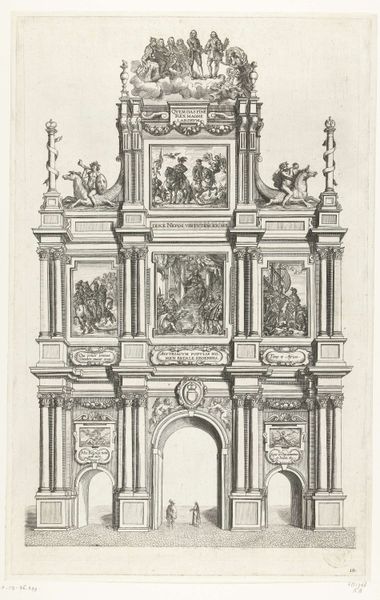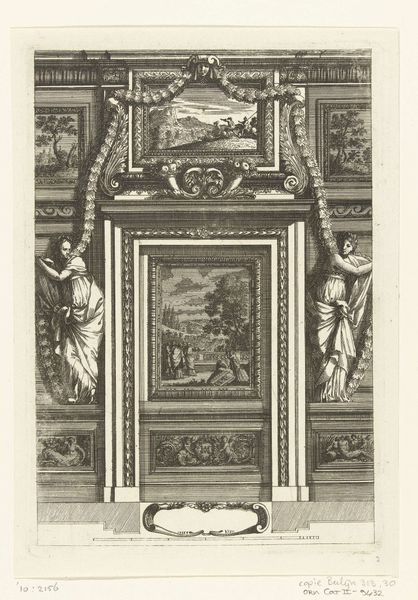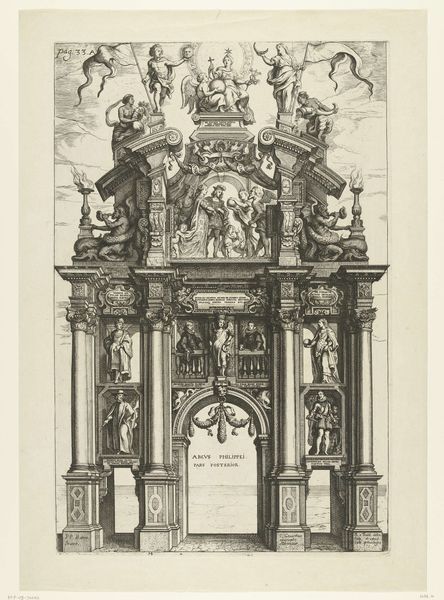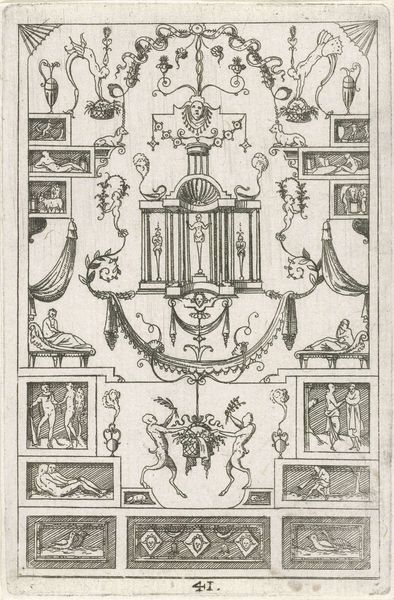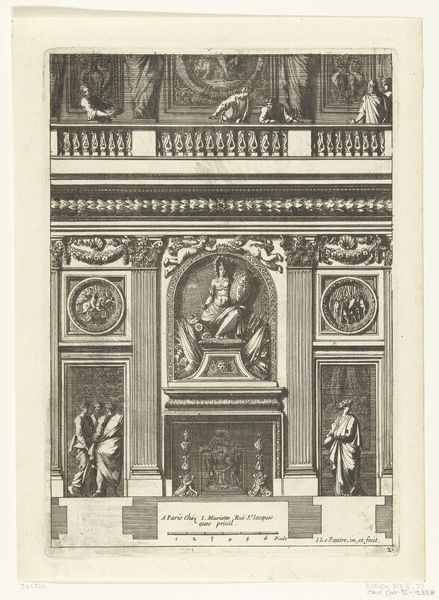
#
comic strip sketch
#
mechanical pen drawing
#
pen illustration
#
old engraving style
#
personal sketchbook
#
sketchwork
#
pen-ink sketch
#
pen work
#
storyboard and sketchbook work
#
cartoon carciture
Dimensions: height 220 mm, width 153 mm
Copyright: Rijks Museum: Open Domain
Editor: This pen and ink drawing, "Zes ontwerpen voor altaren," or "Six designs for altars," from 1690, by Juan Dolivar, presents a series of quite intricate architectural sketches. What strikes me most is how each design, though unique, seems to carry this intense aura of Baroque grandeur, fitting for a sacred space. How do you interpret these designs within their historical context? Curator: Indeed, this work offers a fascinating glimpse into the world of late 17th-century altar design, reflecting not only the Baroque aesthetic but also the evolving role of the Church in society. Think about where these altars might be placed. The details in these designs would appeal to certain patrons. Can you imagine who might have commissioned such altars? Editor: I suppose a wealthy parish, eager to showcase their piety and influence through the grandeur of the church interior? Curator: Precisely. And beyond personal or local piety, there's also the political element. During this period, religious institutions often played a crucial role in solidifying social hierarchies. The impressive altars visually reinforced the church's power and the donor’s elevated status within that hierarchy. Editor: So, the art becomes a kind of...propaganda, in a way? Projecting power? Curator: You could argue that! It is less propaganda, perhaps, and more an intentional construction of a visual narrative designed to inspire awe and maintain social order. But these designs weren't just about the elite; they served a didactic purpose, communicating religious stories and principles to the broader populace through visual means. Considering all of these factors provides insights into the culture that inspired the works. Editor: I hadn’t considered the function of storytelling so explicitly in architectural design. I was so focused on the grandeur of the design itself. Curator: These altars became focal points, places of communal gathering where visual language reinforced the spoken word. So in this piece, what we learn about socio-political context adds depth to the way we can understand it. Editor: This perspective completely changes my understanding. Seeing beyond the pure aesthetic makes it so much richer. Thanks for illuminating the story!
Comments
No comments
Be the first to comment and join the conversation on the ultimate creative platform.
